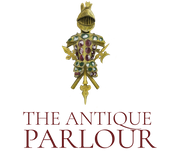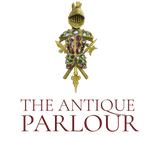What Different Diamond Cuts Can Tell You About Antique Jewelry
The art of jewelry making is more complicated than many people realize. Creating pieces that make the most of the materials used is a talent that has evolved over generations. How gemstones are cut affect their radiance and how they look inside a piece of jewelry. Diamonds have long been prized for their rarity and appeal. However, the art of cutting a diamond in specific ways to enhance their beauty is less than a thousand years old. Understanding and recognizing different diamond cuts can tell you a lot about where and when a piece of antique jewelry was created.
Point Cut Diamonds
The earliest diamond jewelry was made without access to tools that could cut a diamond. For this reason, diamonds in ancient jewelry always used a "point cut." The name is slightly misleading because this refers to diamonds that are still in their natural octahedral (eight-sided) shape. The stones have been polished to increase their radiance, but they haven't been literally cut. Natural diamonds look like two pyramids joined at the bottom.
The Romans used point cut diamonds in their jewelry, and jewelers inherited this style throughout Europe. Though a point cut diamond isn't a brilliant as something with a more modern cut, they are a mark of some of the oldest jewelry that you can find. Point cut diamonds reached the height of its popularity in the 15th and 16th centuries.
Table Cut Diamonds
A significant breakthrough in diamond cutting came when jewelers realized that a diamond could be cut by diamond dust. This discovery led to the creation of better tools and the introduction of the "table cut." A table cut diamond is flat, like a table. Each of the four sides has a simple facet similar to a bevel. One of the earliest diamond engagement rings featured a combination of point cut and table cut diamonds. In 1477, Mary of Burgundy received a diamond engagement ring from Archduke Maximilian of Austria. The ring was set with a point cut diamond and thin flat pieces of diamonds in the shape of an "M."
Rose Cut Diamond
More advancements in jeweler tools led to diamonds that had facets cut into them. The rose cut and transition cut began to be used by diamond jewelers in the West. The rose cut was introduced by 1530 and was named for its resemblance to a closed rosebud. Rose cut diamonds have a softer, more diffused shiny than modern cut diamonds. The most popular variation had 24 facets and a high dome. The rose cut differs from other diamond cuts as it doesn't have culets and tables. The rose cut is often seen in Tudor era jewelry.
Old Mine Cut
One of the next significant advancements in diamond cutting came in the 18th century with the introduction of "old mine cut" diamonds. Old mine cut diamonds, also known as cushion cuts, are a precursor to modern brilliant cuts. Old mine cut diamonds have a slightly curved edge which forms a soft square. This cut could be utilized with a variety of facet patterns. A common element of all mine cut diamonds is a small table, high crown, and larger culet. Old mine cuts are often seen in Georgian and Victorian jewelry from the 18th and 19th centuries.
Asscher Cut and Emerald Cut
During the Art Deco period, "Asscher cut" diamonds became popular. Royal Asscher Diamond Company in created and patented this cut in 1902. Classic Asscher cut diamonds are cut into squares and resemble rectangular emerald cuts. However, Asscher cut diamonds have larger step facets, a higher crown, and a smaller table. If you're looking for Asscher cut diamonds, make sure you're not just getting square emerald cuts. Emerald cuts were introduced in the 1930s and increase the brilliance of a stone with a dramatic hall of mirrors effect.
Stonecutters throughout history have found unique ways to cut their stones for a particular purpose, and we didn't have time to talk about all of them. The cuts we discussed are just a handful of the many possibilities that can be found in antique jewelry. If you have any questions about antique jewelry or need help finding a particular piece, The Antique Parlour can help.


Great and amazing content. Very good article. I will definitely recommend it to others. Keep sharing amzing content like this. Also if you want to read about Business Ideas In Pakistan Please take a look at this. Thanks!
Leave a comment